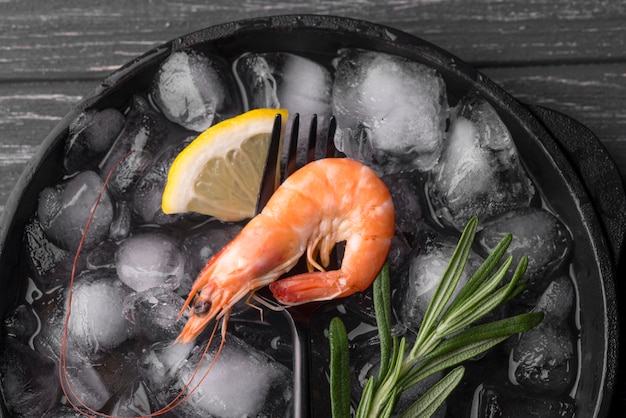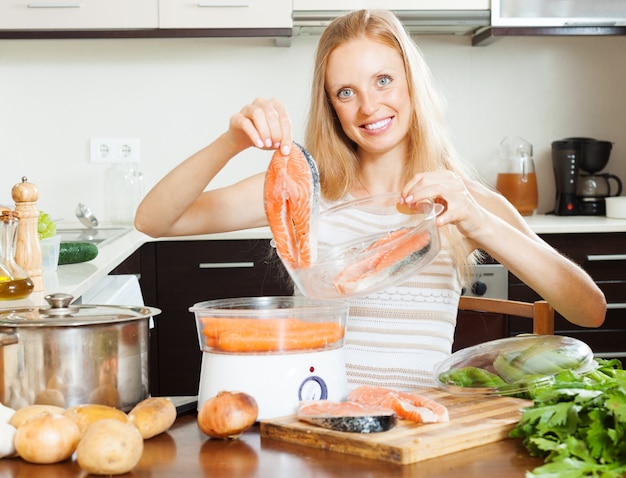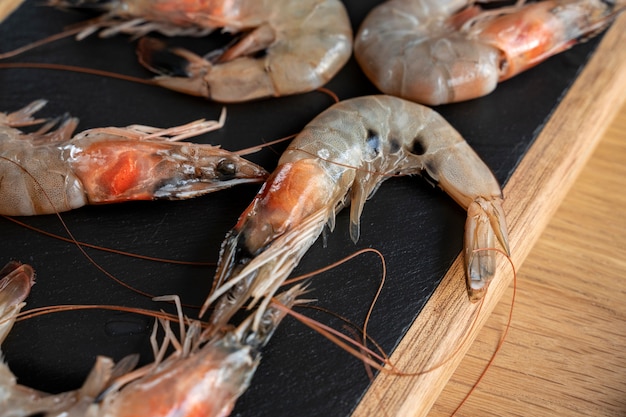Ah, frozen crab legs. They hold the promise of a delicious seafood feast, but let's be honest, sometimes they leave us feeling a bit disappointed. You know the feeling - that rubbery texture, the bland flavour... it's enough to make you question your cooking skills. But fear not, fellow seafood lover! I'm here to share my hard-earned wisdom, gleaned from years of experimenting with frozen crab legs. Together, we'll conquer the frozen crab leg challenge and unlock the secrets to a truly satisfying meal.
This guide will cover everything from choosing the right crab legs to mastering the art of thawing and cooking them. We'll explore different cooking techniques, discuss dipping sauces, and share a few insider tips that'll make your next crab leg feast unforgettable. So grab a glass of something refreshing, settle in, and let's dive into the world of frozen crab legs!
(Part 1) Choosing the Right Frozen Crab Legs: A Culinary Treasure Hunt

Choosing the right frozen crab legs is a crucial first step. Imagine it like selecting a rare, vintage book - you want to find a treasure, not a disappointment. Not all frozen crab legs are created equal, and some are, well, let's just say they're not worth the effort. But fear not, I'm here to guide you through the process of finding the best frozen crab legs.
Unveiling the Crab Leg Varieties
First, let's talk varieties. You've got King Crab, Snow Crab, Dungeness Crab, and a few other contenders. Each type boasts its own unique personality, offering distinct flavours and textures. King Crab, often considered the king of the bunch, is known for its rich, sweet flavour and firm texture. It's usually my go-to choice for a truly decadent experience. Snow Crab, on the other hand, is more delicate, offering a sweeter taste. And Dungeness Crab, another popular choice, has meaty, firm legs that are perfect for cracking open.
The Secrets to Choosing the Perfect Frozen Crab Legs
Now, when you're scanning the freezer aisle for your chosen crab leg variety, keep an eye out for these key features:
- Firmness and Colour: Look for legs that are firm and bright in colour. Anything discoloured or mushy is a red flag.
- Freshness: Check the packaging date. Ideally, choose crab legs that were frozen within a few days of being caught. This ensures the freshest flavour and texture.
- Individual Wrapping: Look for individually wrapped legs. This prevents them from sticking together and makes them easier to thaw and cook.
Remember, the goal is to find crab legs that are fresh, firm, and free from any signs of spoilage.
(Part 2) Thawing Frozen Crab Legs: A Gentle Process

You've got your crab legs, but now it's time to thaw them out. The key here is to be patient and gentle. Think of it like a delicate dance – a slow, graceful movement, not a frantic frenzy.
The Refrigerator: A Slow and Steady Thaw
The best way to thaw frozen crab legs is in the refrigerator. It's a slow, gentle process that allows the crab legs to defrost evenly, preserving their flavour and texture. Simply place them in a bowl or container and allow them to sit for 12 to 24 hours.
Cold Water: A Quicker Option (With a Word of Caution)
If you need a quicker thaw, you can use cold water. Submerge the crab legs in a bowl of cold water and let them sit for about 30 minutes to an hour. But be careful not to let them sit for too long. The crab meat might start to absorb too much water, diluting the flavour and changing the texture.
Room Temperature: A Big No-No
I strongly advise against thawing crab legs at room temperature. This can lead to uneven thawing, causing the outer part of the legs to thaw faster than the inside, making the meat mushy and potentially creating a breeding ground for bacteria. Trust me, you don't want to risk a foodborne illness.
(Part 3) The Best Ways to Cook Frozen Crab Legs: Unlocking Culinary Magic

Now, here’s where things get exciting! There are a few tried-and-true methods for cooking frozen crab legs, each yielding a unique flavour and texture. Choose the one that best suits your preferences and cooking style.
Boiling: The Classic Approach
Boiling is the classic method for a reason. It's straightforward, efficient, and perfect for a quick weeknight meal.
- Fill a Pot: Fill a large pot with enough water to cover the crab legs.
- Salt It Up: Add a generous amount of salt (about 2 tablespoons per gallon of water) to enhance the flavour.
- Bring to a Boil: Bring the water to a rolling boil.
- Gently Lower: Gently lower the crab legs into the boiling water.
- Reduce Heat: Reduce the heat to a simmer.
- Cook Time: Cook for 8 to 10 minutes for smaller crab legs and 10 to 12 minutes for larger legs.
The boiling method is a surefire way to create tender and flavorful crab legs.
Steaming: The Delicate Touch
For a more delicate flavour, steaming is another excellent option. It's a bit more time-consuming, but the results are worth the extra effort.
- Fill the Pot: Fill a large pot with about an inch of water.
- Place the Basket: Place a steamer basket inside the pot.
- Bring to a Boil: Bring the water to a boil.
- Add the Crab Legs: Place the crab legs in the steamer basket.
- Cover and Steam: Cover the pot and let the crab legs steam for 10 to 15 minutes.
Steaming allows the crab legs to cook in their own juices, resulting in a tender and flavorful outcome.
Grilling: The Smoky Delight
Feeling adventurous? Try grilling your crab legs! It's a great way to add a smoky flavour and create a beautiful char.
- Preheat: Preheat your grill to medium-high heat.
- Place the Legs: Place the crab legs on the grill.
- Cook Evenly: Cook for 5 to 8 minutes per side, rotating every few minutes for even cooking.
Grilling brings a smoky depth to the flavour and a delightful crispy texture to the shell.
Baking: The Foolproof Choice
Baking is another reliable option for a stress-free cooking experience.
- Preheat: Preheat your oven to 350°F (175°C).
- Prepare the Legs: Place the crab legs in a baking dish.
- Add Flavor: (Optional) Toss the legs in melted butter, garlic, and herbs for extra flavour.
- Bake: Bake for 10 to 15 minutes.
Baking is a simple way to create tender, juicy crab legs without the fuss of other methods.
(Part 4) How to Tell When Your Crab Legs Are Done: Master the Signs
Now, how do you know when those crab legs are ready to be devoured? You want the meat to be tender and flaky, not rubbery or tough. Here are a few telltale signs that your crab legs are cooked to perfection:
The Firmness Test
Gently press on a leg. The meat should feel firm and springy. If it feels soft or mushy, it needs more cooking time.
The Colour Change
As the crab legs cook, they should turn a vibrant red colour. This indicates that the meat is cooked through.
The Shell Separation
If you can easily pull the shell away from the meat, it's a good indication that the legs are cooked through.
The Heat Check
The legs should feel hot to the touch. If they're still cold, they need more cooking time.
(Part 5) Dipping Sauces for Crab Legs: Elevating the Flavour
You've cooked your crab legs perfectly. Now it's time to bring out the dipping sauces! A good dipping sauce can elevate the flavours and make your crab legs even more delicious.
Classic Melted Butter: A Time-Honored Tradition
Let's start with the classic. Nothing beats the simple pleasure of melted butter, especially when it's infused with a few cloves of garlic and a sprinkle of fresh herbs. It's a classic for a reason.
Spicy Cocktail Sauce: A Kick of Heat
If you like a little heat, try a spicy cocktail sauce. You can find pre-made versions at the supermarket, but if you're feeling adventurous, whip up your own with ketchup, horseradish, lemon juice, and a dash of hot sauce.
Garlic Herb Butter: A Taste Sensation
This is a personal favourite. Combine melted butter with minced garlic, fresh parsley, dill, and a squeeze of lemon juice. It's simple yet incredibly flavourful.
Lemon-Dill Sauce: A Light and Refreshing Delight
For a lighter, more refreshing sauce, try lemon-dill sauce. It's a perfect choice for those who prefer a milder flavour. Combine mayonnaise, lemon juice, chopped fresh dill, and a pinch of salt and pepper.
(Part 6) Serving Your Crab Legs: A Culinary Presentation
Now that your crab legs are cooked and seasoned to perfection, it's time to create a stunning presentation.
The Serving Plate: A Stage for Your Seafood
A large platter or serving dish is ideal for showcasing your crab legs. You can also use a tiered serving stand to create a visually appealing display.
Cracking Tools: Essential Equipment
Don't forget to provide your guests with cracking tools. A crab cracker, a fork, and a small knife are essential for accessing the delicious meat inside.
side dishes: The Perfect Complements
Serve your crab legs with a variety of side dishes to create a well-rounded meal.
- Melted Butter: A classic choice, especially when infused with garlic and herbs.
- Cocktail Sauce: A spicy option for those who like a kick.
- Garlic Herb Butter: A simple yet flavourful option.
- Lemon-Dill Sauce: A light and refreshing alternative.
- Coleslaw: A crunchy and tangy side dish.
- corn on the cob: A sweet and buttery favourite.
- baked potato: A creamy and satisfying side dish.
- rice pilaf: A flavorful and fluffy addition.
- Green Salad: A refreshing and healthy option.
Drinks: The Perfect Pairing
Pair your crab legs with a refreshing drink to enhance the overall dining experience. A crisp white wine or a chilled beer complements the flavours of crab legs perfectly.
(Part 7) leftover crab legs: A Culinary Treasure
You've enjoyed a delicious feast of crab legs. Now you have some leftovers. No problem! Leftover crab legs can be stored in the fridge for up to 3 days. You can reheat them in the oven or microwave, or use them to create new dishes.
Reheating Tips
To reheat crab legs, simply place them in a baking dish and bake at 350°F (175°C) for 10 to 15 minutes. Alternatively, you can microwave them for 1 to 2 minutes.
Creative Leftover Ideas
Here are some creative ideas for using leftover crab legs:
- Crab Salad: Combine leftover crab meat with mayonnaise, celery, onion, and lemon juice.
- Crab Pasta: Add leftover crab meat to your favourite pasta dish.
- Crab Sandwiches: Make delicious sandwiches with leftover crab meat, mayonnaise, lettuce, and tomato.
(Part 8) A Few Helpful Hacks: Insider Tips for Success
I'm going to share a few insider tips that will make your crab leg experience even better.
Pre-Crack the Legs: A Time-Saving Trick
If you're having a large gathering, pre-crack the crab legs to make it easier for your guests to access the meat. Use a crab cracker to gently crack the shells.
Use Tongs to Dip: Keeping Your Hands Clean
Use a pair of tongs to dip your crab legs in the sauce. This keeps your fingers clean and prevents you from getting the sauce all over your clothes.
Don't Overcook: Avoiding Toughness
It's tempting to overcook crab legs, but it can lead to tough, rubbery meat. Follow the cooking times closely and check for doneness.
(Part 9) FAQs: Answering Your Burning Questions
I've covered a lot of ground, but you've probably got some lingering questions. Here are some FAQs to address the most common ones.
Can I Freeze Cooked Crab Legs?
It's not recommended to freeze cooked crab legs. They can lose their flavour and texture.
What are Some Good Dipping Sauces for Crab Legs?
Some popular dipping sauces include melted butter, cocktail sauce, garlic herb butter, and lemon-dill sauce.
How Long Can I Keep Frozen Crab Legs in the Freezer?
You can keep frozen crab legs in the freezer for up to 6 months.
What are the Best Ways to Eat Crab Legs?
The most common way to eat crab legs is to crack them open with a crab cracker and then use a fork to extract the meat.
How Do I Know if My Crab Legs are Bad?
If the crab legs smell bad, have a slimy texture, or have a discolored appearance, they have gone bad.
(Part 10) Conclusion: Embracing the Joy of Crab Legs
There you have it! I hope this guide has armed you with the knowledge and confidence to cook frozen crab legs like a pro. Remember, the key is to choose fresh crab legs, thaw them properly, cook them gently, and enjoy them with your favourite dipping sauces. Happy feasting!
I'd love to hear your experiences cooking frozen crab legs. What's your favourite dipping sauce? Do you have any creative crab leg recipes to share? Leave a comment below and let's continue the conversation.
Everyone is watching

Prime Rib Roast Cooking Time Chart: Per Pound Guide
Cooking TipsPrime rib roast. Just the name conjures images of lavish dinners, crackling fires, and hearty laughter. It’s ...

How Long to Bake Potatoes in the Oven (Perfect Every Time)
Cooking TipsBaked potatoes are a staple in my kitchen. They're incredibly versatile, delicious, and surprisingly easy to m...

Perfect Rice Every Time: The Ultimate Guide to Cooking Rice
Cooking TipsAs a self-proclaimed foodie, I've always been a bit obsessed with rice. It's the foundation of countless cuisi...

The Ultimate Guide to Cooking Asparagus: Tips, Techniques, and Recipes
Cooking TipsAsparagus. The mere mention of this spring delicacy conjures up images of vibrant green spears, crisp and burs...

Ultimate Guide to Cooking the Perfect Thanksgiving Turkey
Cooking TipsThanksgiving. Just the word conjures up images of overflowing tables laden with delicious food, the scent of r...
